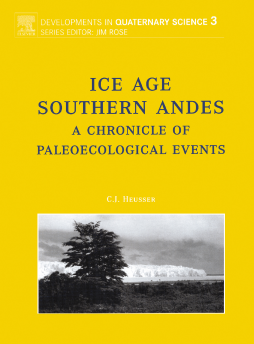
Additional Information
Book Details
Abstract
The Southern Andes, stretching from the subtropics to the subantarctic, are ideally located for palaeoenvironmental research. Over the broad and continuous latitudinal extent of the cordillera
(-24˚), vegetation is adjusted to climatic gradients and atmospheric circulation patterns.
Opposed to the prevailing Southern Westerlies, the Southern Andes are positioned to receive the brunt of the winds, while biota are set to record the shifting of incoming storm systems over time. Sequential, latitudinally-placed, sedimentary deposits containing microfossils and macroremains, as archives of past vegetation and climate, make possible the detection of equatorward and poleward displacement of plant communities and, as a consequence, changes in climatic controls. No terrestrial setting in the Southern Hemisphere is so unique for palaeoenvironmental reconstruction during and since the last ice age. Twenty radiocarbon-dated fossil pollen and spore records chosen to place emphasis on the last ice age include high-resolution, submillennial data sets that also cover the Holocene, thus providing contrast between present interglacial and past glacial ages. From a refined data base, the records constitute the foundation for interpreting factors responsible for vegetation change over >50,000 14C years, glacial-interglacial migration and refugial patterns for a diversity of taxa, and the extent of intrahemispheric and polar hemispheric synchroneity versus asynchroneity.
M. Bush
...I find this volume immensely useful as it is a compendium of so many useful datasets from a leader in the field.
Geoarchaeology
W.D. Gosling
...Illustrated with beautiful and informative photographs throughout. ...would be of interest to anyone working on environmental change in South America, especially those who are new to the field, owing to the wealth of background information and the completeness of the reconstruction presented.
Journal of Quaternary Science
S. Harrison
...Heusser has provided a wonderful synthesis of a vast body of research and this is required reading for anyone researching the Quaternary history of this remote region.
Holocene, 2005
